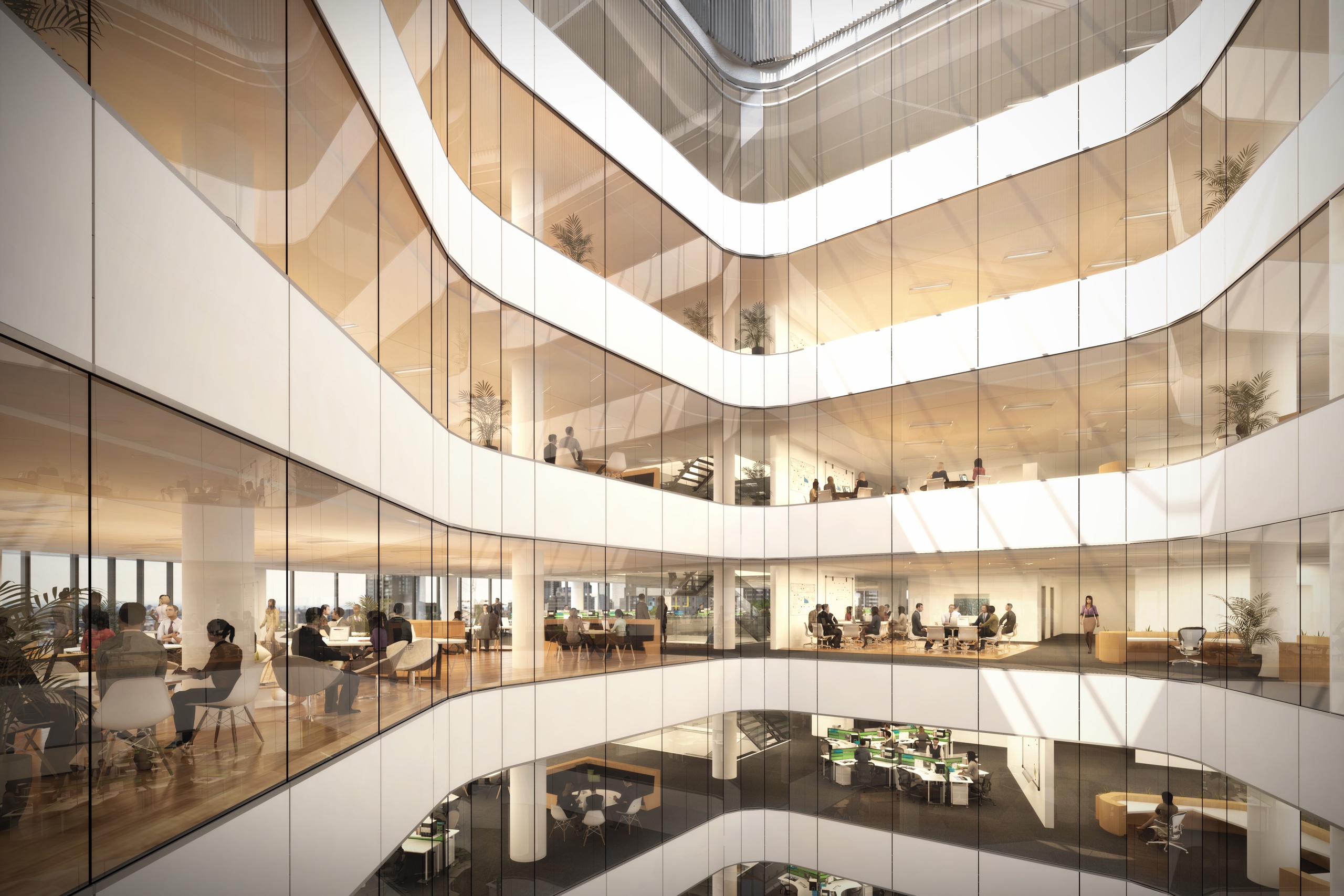Cbus Property shakes up the sustainability space
Building greener benchmarks
21 Apr 2016
Since achieving its first rating in 2008, Cbus Property has been quietly setting new standards and building greener benchmarks within Australia’s property industry.
Cbus Property is the property development and investment arm of the Construction and Building Industry Superannuation Fund, which has 720,000 members and $32 billion-plus in funds under management.
The developer now has 14 Green Star projects under its belt amounting to 400,000 sqm of commercial space around the country.
In just the last three months, Cbus Property has added 54,000 sqm of Green Star space to its stable, notching up a 6 Star Green Star rating for 50 Flinders Street in Adelaide and a 5 Star Green Star rating for 5 Martin Place in Sydney. A further five Green Star projects are under construction.

Sustainability has become a ‘core value’ among the investment community.
Cbus Property’s Chief Executive Officer, Adrian Pozzo, says sustainability influences the entire design process within the company’s development and investment portfolio.
“Our aspiration is to create one of the greenest Green Star and NABERS-rated portfolios in Australia. Sustainable initiatives which were leading-edge a decade ago have now become industry standards. In fact, sustainability is no longer a tenant expectation, it is now a requirement,” he says.
Many of Cbus Property’s projects are resetting the standard for commercial building. The sparkling skyscraper at 1 Bligh Street continues to represent the next generation of sustainable building design, while the sandstone charm of the heritage-listed 5 Martin Place shows how old could be new again.
In Adelaide, the activity-based working environment at 50 Flinders Street is reinventing the office, while the clever, contorted façade and vertical gardens at Melbourne’s 720 Bourke Street optimise health and wellbeing.
Cbus Property’s Executive Manager – Asset Management, Chris Hardy says “the real estate market in Australia has undoubtedly shifted over the last five years.
“Tenants are faced with the increasing challenge of staff retention within a slowly shrinking workforce and a growing younger employee profile demanding sustainable and healthy workplaces as part of their corporate and cultural expectations.
“Cbus Property understands that our commercial buildings shape the culture and personality of our partners and the tenants occupying our buildings, hence aligning with tenancy management teams who are very aware of Green Star when making decisions on the occupancy of new office accommodation.”
Chris acknowledges the value of these synergies. “Our developments not only have lighter environmental footprints than many of our competitors – they also lease more readily within the marketplace for higher occupancy rates and rental levels. Our partners also pre-commit to longer lease terms than the industry average delivering better outcomes in both sustainable and financial terms.”
Cbus Property has achieved an average NABERS Energy rating of 5.1 stars across its office portfolio, and has slashed energy consumption by 20.7 per cent over the last five years. Clearly this approach is working, with 720 Bourke Street alone sitting at 99 per cent occupancy.
Cbus Property now expects all its employees within onsite development and management teams to have sustainability skills and qualifications to ensure that no weak links in the chain exist across the design, construction and management phases,” Adrian explains.
“In this environment, Cbus Property must provide sustainable destinations that support our partners’ business aspirations and enhance employee occupancy experiences.
“Sustainability has become a ‘core value’ among the investment community.
“The investment community is now a globally-interconnected marketplace that has made corporate social responsibility and environmental sustainability ‘non-negotiables’.
“ESG is now a standard approach that shapes how procurement decisions are made to ensure what we do aligns with our stakeholders’ expectations.”
Adrian expects this shift to green will only accelerate, and Cbus Property is determined to lead from the front. Since achieving its first Green Star rating in 2008 for 550 Bourke Street in Melbourne, the company has worked with its people and partners to “rethink and rationalise” its entire portfolio.
“We scrutinise each project to look at which design initiatives produce the best outcomes, and what can be improved. This process of improvement is applied to our existing development pipeline to ensure every advantage is gained from each development.
“Where a 5 Star rating was once an aspirational goal, today we are seeing 6 Star becoming the benchmark. As technology and design continues to evolve, we can expect the industry to continue to move onwards and upwards,” Adrian concludes.
